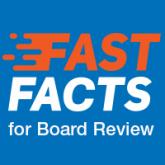As part of our commitment to resident education, Cutis is excited to offer this monthly section with board-relevant, easy-to-review material. The injectable neurotoxins available in the United States are outlined in this review, including US Food and Drug Administration approval for particular conditions. There are 7 serologically distinct botulinum neurotoxins designated A through G; they are fermented from various strains of Clostridium botulinum. All share a common structural organization consisting of a heavy chain and a light chain polypeptide linked by a single disulfide bond. Serotypes A and B have clinical applications, with serotype A derived from the Hall strain and serotype B from the Bean strain. The mechanism of action for botulinum neurotoxin is inhibition of acetylcholine (ACh) release at the neuromuscular junction, thus inhibiting muscle contraction. The heavy chain binds to the cell membrane receptors of the nerve terminal to allow endocytosis of the neurotoxin complex. The light chain cleaves synaptosomal associated protein of 25 kDa (SNAP-25), preventing the ability of ACh-containing vesicles to fuse with the cell membrane to transmit ACh into the neuromuscular junction.
To view this month's Fast Facts for Board Review, click here.
To view the answers to the practice questions, click here.
